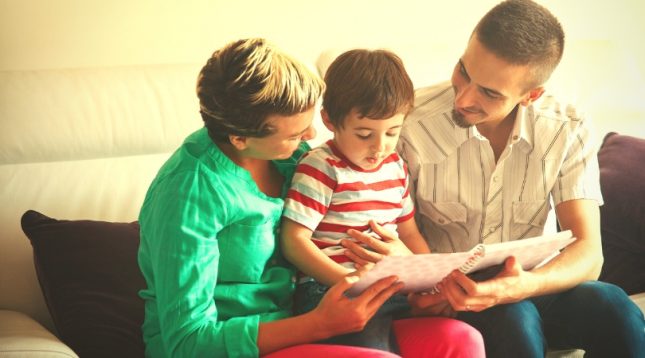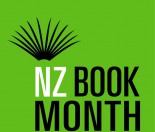Why is it that some children love to write and draw and for others it’s a struggle to get them to even pick up a pencil? Encouraging your preschooler to read and write at this age is all about encouraging them to develop a love of learning.
As a teacher of children in home based childcare I’ve learnt that they’re all unique with their own strengths and interests, and are each individual in the way they learn.
It’s important to recognise that there are many different learning styles and many children lean towards one, while also being a combination of others.
What are the different ways a child learns?
- Visual (spatial): Prefer using pictures, images, and spatial understanding.
- Aural (auditory-musical): Prefer using sound and music.
- Verbal (linguistic): Prefer using words, both in speech and writing.
- Physical (kinesthetic): Prefer using their body, hands and sense of touch.
- Logical (mathematical): Prefer using logic, reasoning and systems.
- Social (interpersonal): Prefer to learn in groups or with other people.
- Solitary (intrapersonal): Prefer to work alone and use self-study.
These different learning styles can be why some children don’t appear to be interested in learning to write their name or learn their ‘ABC’. The real issue is that they’re not being taught in a way that suits their learning style.
Understanding your child’s favourite learning styles will go a long way to helping them develop their basic reading and writing skills.
Are you worried about your child’s lack of interest in reading/writing?
In my role as a teacher of children in in home childcare, I’m asked by many parents and caregivers about their worries such as: their four year old shows no interest in trying to write their name, or is not very interested in books.
This sort of thing concerns parents and caregivers, as they want their child to have a positive and successful start to school.
How then do these children learn valuable literacy skills that will give them a strong foundation for success with reading and writing?
It may be that the child’s learning style doesn’t fit with some of the traditional methods for developing literacy skills which mostly appeal to visual, verbal and logical learning. For example a child whose learning style is kinesthetic will need a more creative approach to learning.
17 Easy ways to encourage your preschooler to read and write
Look for activities that are based around your child’s interests and current areas of play, this will make learning a lot more fun.
You’ll be surprised at how easy it is to bring literacy skills into all kinds of play and to incorporate different learning styles.
1. Sand – Trace letters with a stick or a finger. Mould and shape with your hands the first letter of their name and encourage them to do the same. You could also hide magnetic letters in the sand
2. Car play – Use masking tape on the floor and mark out some letters. Driving the car around the taped letters will create a memory for the brain of the shape of the letter for future recognition
3. Make signs together for the road e.g. stop and give way signs
4. Play dough – Roll out snakes and then make letters such as ‘C’ or ‘S’ and then chop to make ‘E’, ‘M’ and ‘L’ etc. You could mould out the letters in your child’s name and then bake them in a low oven until hard
5. Art – There are many arts and crafts that you can do to encourage literacy:
- Cut out paper into the first letter of their name for painting
- Cut up old sponges into letters
- Have all the letters in their name cut out for them to put in order and paste
- Many children who feel reluctant to try writing their name will draw over a dotted version or go over your version in a highlighter or light coloured felt. Remember to only use a capital for the first letter. So write names as Jack, not JACK. This means that children don’t have to relearn the correct way when they go to school
- Use a hole punch to mark holes in a card in the shape of a letter/s and get your child to thread wool or a shoelace in and out to form the letter
6. Pipe Cleaners – Twist into letters and words
7. Cooking – Alphabet biscuits, yummy! Reading a recipe together gives meaning to reading
8. Blocks – Be creative, how can you arrange the blocks to make a letter?
9. Games – Have treasure hunts where you have to find a letter, name or word
- Play card games like snap where you have to match letters
- Listen to songs and poems that highlight letters and their sounds such as tongue twisters or B.i.n.g.o was his name
- Listen to audio versions of stories while looking at a book or E book versions
10. Join the library – it’s free! Then your child can choose their own books
11. Make your own book together with photos, drawings or by cutting out pictures from magazines
12. Have a letter of the day– Play a game where the child shouts out when they see the letter of the day. This could be on a street sign, magazine or coming up on the television screen
13. Have writing tasks that show the meaning of writing, as for some children it ‘clicks’ when they see literacy in everyday tasks that are relevant. This could include writing in a card, addressing an email, writing on gift tags, writing a shopping list or leaving a note out for Dad or Grandma
14. Children like to have choice so have writing tools available and easy to access. This could include setting up a little writing table and chair with paper, rulers, stencils, erasers, pens and pencils
15. Have paper and pens in areas they like to play. There is no reason you can’t have some paper and pens in a box near the blocks or the sand pit. Your child may like to draw plans about what they are going to build
16. Set up your own letter box with a decorated box made to look like a post box and then write and post letters to each other including family and visitors. Ask family or friends to post a letter to your home as this is so exciting for a child to get their own mail. At Footsteps we have special envelopes which have a Footprint symbol so the children see it in the letterbox and know that their mail has arrived
17. Writing requires hand eye coordination and dexterity in the hands, so any play that enhances these such as threading activities, building with small blocks, puzzles, using paint brushes, using clay or dough or playing ti rakau (Maori stick games) will all develop the skills the brain and body needs for writing.
These ‘learning through play’ ideas will help get your child’s body and brain ready for learning. Hopefully with some of these activities your child will feel confident in their abilities and begin to enjoy writing or exploring play which will lead to writing skills.
Why not give one or two of the ideas a try and let us know how you get on?
For more expert advice on developing your preschoolers love to learn, check out our Early learning with your child section.







